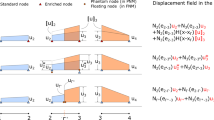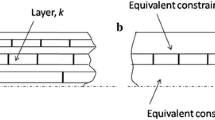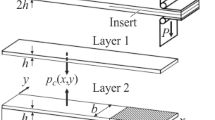Abstract
The paper considers two classes of approaches for the numerical analysis of composite systems: the first one discretizes the assumed interphase (between matrix and fibre) as volumic elements and uses material models that degenerate from Continuum Damage Mechanics. The second one introduces interface elements that relate non linearly the normal and tangential tractions to the corresponding displacement discontinuities, incorporating a progressive decohesion, following the lines of Needleman (1987) and Tvergaard (1990).
The respective capabilities of these two approaches are discussed on the basis of some numerical results obtained for a unidirectional metal matrix composite system. When the models are consistently adjusted they are able to reproduce the same kind of results. The advantages of the second class of method is underlined and two new versions of interface models are proposed that guarantee the continuity and the monotonicity of the shear stiffness between the progressive decohesion phase and the subsequent contact/friction law that plays role under compressive shear after complete separation.
Similar content being viewed by others
Author information
Authors and Affiliations
Rights and permissions
About this article
Cite this article
Chaboche, J., Girard, R. & Schaff, A. Numerical analysis of composite systems by using interphase/interface models. Computational Mechanics 20, 3–11 (1997). https://doi.org/10.1007/s004660050209
Published:
Issue Date:
DOI: https://doi.org/10.1007/s004660050209




